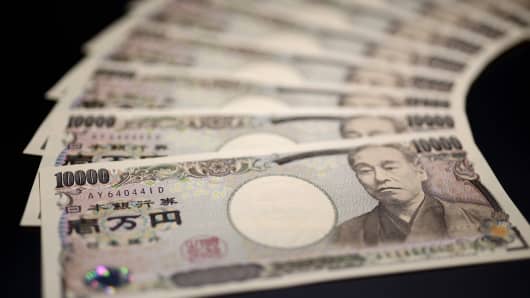Speaking to CNBC on December 21 as the dollar/yen moved above 84 we set the first resistance target near 87 and an upside resistance target near 95. Over the past three weeks the dollar/yen has hovered near 94 to 94.5 as it chews its way through options at this level.
There are several key technical questions. They include: How strong is resistance near 95? If there is a breakout above 95, then where is the next upside target? If the current uptrend collapses, then where is support?
Before answering these questions it's useful to remember that the dollar/yen breakout above 79 in October 2012 was part of a long term fan reversal pattern. We have discussed this pattern in previous notes in 2012 prior to the breakout. In this sense the breakout is not unexpected, but the speed of the breakout was not anticipated. This context is important because it suggests the current fast breakout is part of a much larger bullish pattern.
(Read More: Why G-20 Isn't a Sign That Yen Will Fall Further)
Resistance near 95 is well established. It acted as a support level in March and August 2009. It acted as a resistance level in April 2010. This has been a major feature of the market post the global financial crisis. This suggests it will remain a strong resistance level in 2013. This may mean the dollar/yen spends several weeks or longer consolidating near this resistance prior to developing a breakout or change in trend direction.
A breakout above 95 has two upside targets. The first target is near 102. This was a major support level in December 1999 and again in November 2004. However, it offered no support in April 2008. This suggests that it will offer limited resistance for a breakout above 95.
(Read More: Currency War Defused? Doesn't Seem Like It)
The most powerful support/resistance level is near 102. This acted as support in June 1997, January 1999 and again in September 2005. It acted as a resistance level in January 2004 and June 2008. It was the peak high used for the start of the long term fan trend reversal pattern in August 2008.




